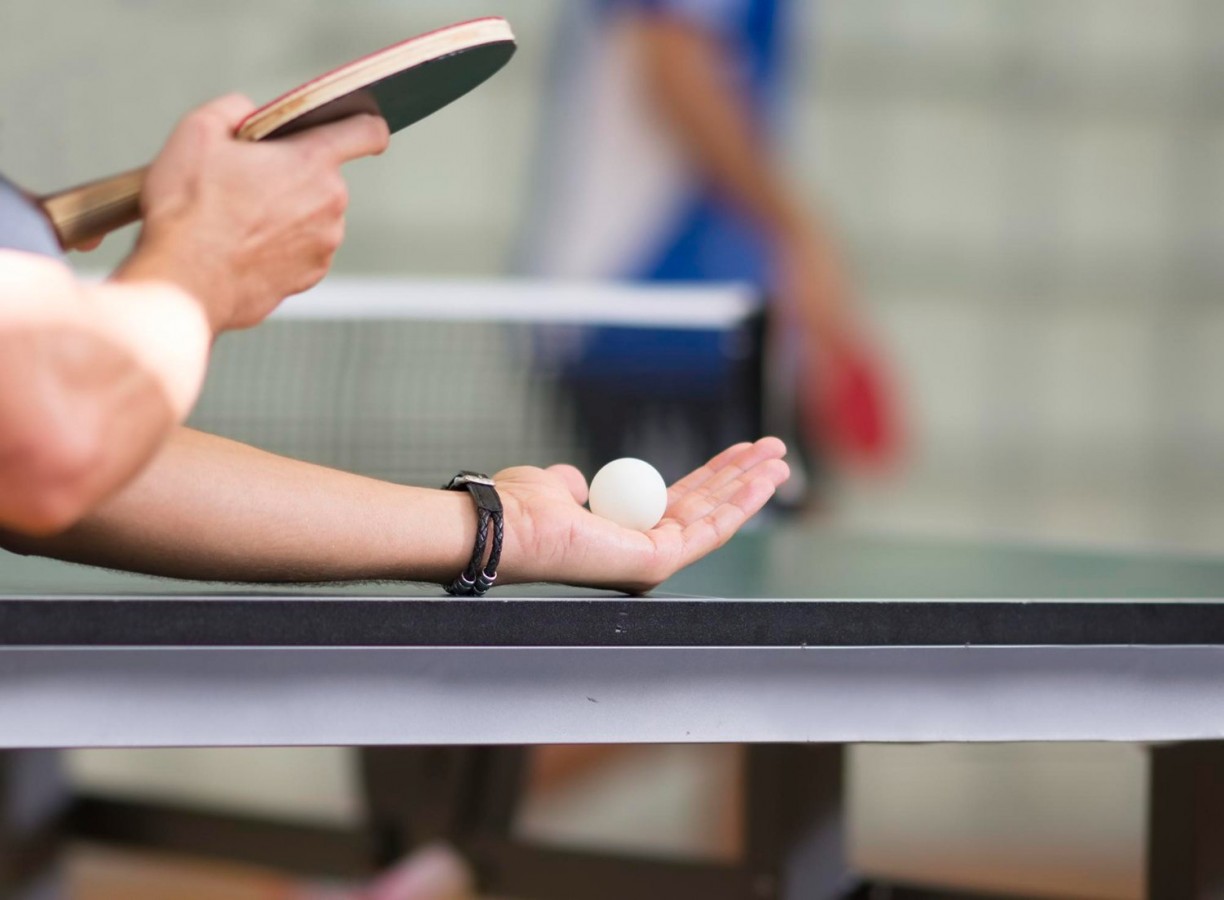Here Is How To Hold A Ping Pong Paddle In A Proper Way

Did you know that the way you hold a ping pong paddle can make or break your game? It’s not just about swinging and hoping for the best but gripping your paddle the right way gives you better control, power, and precision.
If you’re a total beginner or looking to level up your skills, mastering the proper grip is the first step to dominating the table. So, if you want to hit killer spins, return shots like a pro, and avoid embarrassing misses, let’s dive into the right way to hold a ping pong paddle!
How To Hold A Ping Pong Paddle Properly
Holding a ping pong paddle properly is essential for developing consistency and accuracy in your game. The right grip allows for better ball control, improved spin, and enhanced maneuverability. Here are the key principles for holding the paddle correctly:
1. Relax Your Grip
Avoid holding the paddle too tightly. A firm but relaxed grip ensures fluid motion and quick reaction times.
2. Position Your Fingers Correctly
Your fingers should be placed comfortably around the handle, with the index finger often supporting the blade for better control.
3. Maintain Flexibility
A good grip allows smooth transitions between forehand and backhand strokes without restricting wrist movement.
Different Ways To Hold A Ping Pong Paddle
There are several grip techniques used in ping pong, each with its own advantages and disadvantages. The main types of grips include:
1. Shakehand Grip
The shakehand grip is one of the most popular ways to hold a ping pong paddle. It resembles a handshake and is commonly used by players around the world.
To use the shakehand grip, place your thumb on one side of the handle and wrap your fingers around the other side, ensuring your index finger rests on the back of the paddle for support. Keep your wrist flexible to allow for smooth movement.
2. Penhold Grip
The penhold grip is widely used by Asian players and is named for its resemblance to holding a pen.
To use the penhold grip, hold the paddle with your thumb and index finger gripping the handle, similar to holding a pen, while keeping the remaining fingers curled against the back of the paddle. This grip allows for greater wrist movement, enhancing spin and control during gameplay.
3. Seemiller Grip
The Seemiller grip is named after American table tennis player Danny Seemiller, who popularized it. To use the Seemiller grip, hold the paddle similarly to the shakehand grip but with the index finger and thumb pinching the handle, allowing for better control.
This grip utilizes the same side of the paddle for both forehand and backhand shots, making it effective for blocking and spin variations.
The Best Grip for Spinning a Ping Pong Ball
The pistol grip, as the name implies, is similar to holding a gun. You hold the paddle handle between your thumb and index finger, with your other three fingers wrapping around the handle for support. This grip is popular because it allows for great control, quick movements, and the ability to place shots accurately, even with strong spin.
The pistol grip provides players with better control over the paddle, making it easier to execute precise shots like drops, spins, and placements. Its unique finger positioning allows for quick adjustments in grip angle, helping players react swiftly and stay agile during rallies.
Additionally, it enables a wider range of wrist movement, which is crucial for generating different spins that can surprise opponents. The grip also supports an aggressive playstyle, allowing players to smoothly shift from defense to offense while maintaining control and delivering powerful shots with accuracy.
Fix Your Grip!
The way you hold a ping pong paddle might seem like a small detail, but it can make a huge difference in your game! Want to send tricky spins across the table? A flexible wrist and a proper grip are your best friends.
Once you’ve mastered your grip, it’s time to level up with solid ping pong forehand and backhand techniques—so you’re always ready to return any shot that comes your way. But ping pong also requires strong, flexible wrists to deliver powerful and accurate shots. That’s why building a good foundation is key!
If you’re serious about improving your skills, our ping pong program is the perfect place to start. Why? Because Rockstar Academy provides top-notch facilities and follows the PTMSI (Persatuan Ping Pong Seluruh Indonesia) curriculum with a structured level system for players as young as 4 years old up to 18 and beyond.
Our program caters to all skill levels, from beginners learning the basics to advanced players refining their techniques.
With experienced coaches guiding you every step of the way, you’ll get personalized attention to bring out your best performance. Plus, students get the chance to compete in exciting events like RockOlympics, Elite Championships, and even local and international competitions.
And the best part? You can try it out for a free trial class before signing up! Not just ping pong—Rockstar Academy also offers a variety of Sports & Performing Arts programs for you to explore. Ready to smash your way to success? Let’s get started!
FAQ
What is the most common grip in ping pong?
The shakehand grip is the most common and widely used grip among players of all levels.
Which grip is best for beginners?
The shakehand grip is recommended for beginners because it provides a good balance of control and power.
Can I switch grips during a game?
Yes, some advanced players switch grips depending on the shot they are executing, but this requires practice and skill.
How can I improve my grip for better performance?
Practicing different grips, ensuring wrist flexibility, and maintaining a relaxed hold on the paddle can significantly improve your performance.
Does grip affect spin?
Yes, your grip determines how much wrist movement you have, which directly impacts your ability to generate spin.



